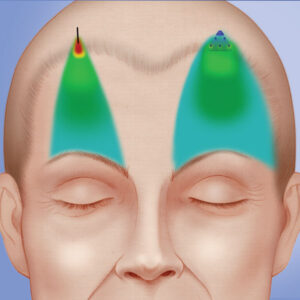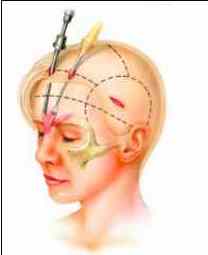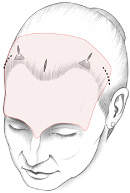Browlift
An aesthetically pleasing eyebrow angles upward in its medial half and drops down slightly or remains horizontal for the rest of the lateral brow. The female brow is slightly higher laterally. A browlift is the procedure that aims to lift the brow and correct brow ptosis that occurs with ageing. It’s often performed in conjunction with an upper eyelid blepharoplasty.
Surgery
The procedure is usually carried out under general anesthetic. Several techniques have been described (direct, mid-forehead, coronal) but the most popular is the endoscopic browlift.
The surgeon uses 3-5 small skin incisions hidden within the hairline of the scalp. With the aid of an endoscope, he dissects the periosteum towards the superior orbital rim. He will aim to separate the attachments of the brow depressor muscles to the periosteum and lift the brow to the desired new position. The brow is then suspended in the new position using a number of techniques (screw, clips, resorbable implants). A popular system is the Endotine (https://www.microaire.com/products/endotine-forehead/).

Possible complications
Like any other surgical procedure, browlift has potential risks. Your OMFS surgeon will discuss these risks prior to your surgery, so that you can make an informed decision, weighing the potential benefits of having the procedure versus the risks. The most common complications are:
- Scars (minimally visible with the endoscopic technique)
- Bleeding: Very rarely, this can be significant enough to cause retrobulbar hemorrhage (link to my chapter)
- Infection
- Swelling and bruising
- Asymmetry
After the procedure:
A browlift takes around 2 hours.
- You will be given an antibiotic ointment to keep the wound clean.
- You will be able to go home the same day
- You will be prescribed painkillers
- You will have the sutures removed 7 days after the procedure
- Bruising around the eyes is common and can last for 2 weeks
- Avoid straining or weight lifting for few weeks
The initial results will be obvious immediately, but the healing process and the final outcome might take up to 3 months to settle. Your surgeon will see you for follow up and take post-surgical photographs for your record.


